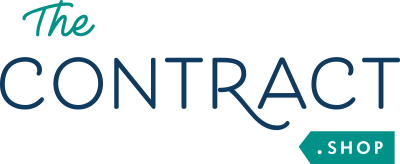Your Cart is Empty
Shop confidently - 14-day no-hassle return policy
Shop confidently - 14-day no-hassle return policy
Shop confidently - 14-day no-hassle return policy
As you’ve poked around other people’s websites you might have noticed a link in the footer called “Terms & Conditions”, and when you clicked on it, it took you to a page full of a ton of legal-looking words. You might have wondered what it was, and if you needed to have a page like that on your own website. Your next thought might have been “can I just copy someone else’s” because trying to figure out what you needed to have in this legal mumbo-jumbo was immediately too much.
Don’t worry, we’re here to answer all of your questions. Let’s start with the first one:
Terms and Conditions protect your business by providing a set of rules, guidelines, and provisions that define the terms under which a service or product is provided and the rights and obligations of the parties involved.
Simply put, the best Terms and Conditions outline the relationship between your brand and your customers clearly. Your Terms and Conditions Agreement will tell users exactly how they can and can’t behave and what to expect when interacting with your website or products. They are a clear set of rules for everyone to follow. These Terms and Conditions typically serve as a legally binding agreement between yourself and your consumer/client.
Legally, you are not required to have Terms and Conditions on your website. That being said, we highly recommend it for any and all websites and businesses.
A clear set of Terms and Conditions on your website can help ensure that everyone knows what is expected of them when using your website, as well as provide clarity on how disputes will be handled if they arise. Without them, you could be leaving yourself open to the theft of your content or liability in the misuse of your products.
Terms & Conditions are important and can protect your website and business in a multitude of ways. We encourage every website and business to have one.
Now that you’ve decided having Terms & Conditions is the right move for your business(we applaud you for not taking the easy way out - you’ll thank yourself later), you’re probably wondering what to include in yours.
There are 5 key elements you’ll want to include in your Terms and Conditions:
Terms of Use. This clause typically outlines exactly how someone can use your copy, content, and products. It also often covers intellectual property, access to digital products (for example, whether or not someone can share their password), user eligibility and more.
Payment Terms. In this clause, you’ll want to be sure to cover how someone can pay for your products or services, any fees that may be incurred, when payments are due if you have a payment plan, and any other important payment terms you may have in place.
Shipping Policy. You may want to include shipping methods, regions, timelines, costs, and more in this clause on your Terms and Conditions page.
Refund and Return Policy. For this clause, you’ll want to think about including things like what is eligible for a return, what the timeframe for returns is, the process of accepting a return, and more.
Offer Terms. For example, if you have a promotion, you’ll want to include the start and end dates, what needs to happen in order for someone to be eligible for that offer, and whether or not it can be combined with other offers.
While that would make this a whole lot easier, no. Copying someone else’s Terms & Conditions is considered copyright infringement - aka, it’s illegal. That would raise your liability more than just not having a policy at all!
Plus, a Terms and Conditions page that’s actually going to protect your business is going to be customized to your own business practices and products, so copying someone else’s Terms and Conditions would likely leave you with liability gaps you aren’t even aware of.
The good news? We’ve got a way for you to copy and paste AND customize your own Terms and Conditions for your website - our Terms and Conditions Templates! These easy-to-customize templates can be set up in 10 minutes or less and you’ll be able to rest easy knowing that you’re protected. You can choose the template that makes the most sense for your business.
Some of the Terms and Conditions templates even include a Privacy Policy Template as well. These are often combined with the Terms and Conditions, but aren’t the same thing. Without a privacy policy, youcould be breaking federal law. Make sure your business is covered legally!
Amanda Warfield is a simplicity-focused content marketing and launch strategist, author of the book Chasing Simple Marketing, and host of Chasing Simple - a podcast to help creative entrepreneurs uncomplicate their marketing and business. She traded in her classroom lesson plans for speaking and educating creative entrepreneurs on sustainably fitting content marketing into their business, without it taking over their business - so that they have time to grow their business.
Comments will be approved before showing up.
